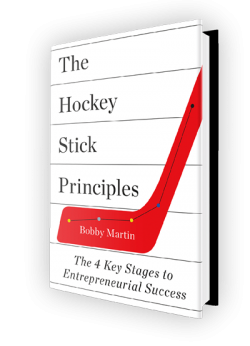It is well-known that “entrepreneurial grit” is a trait required to build an innovative business, but too many founders fail to understand a realistic timetable for taking a new idea and turning it into a viable business. Grittiness isn’t months of hard work with little noticeable results–it’s years.![]() Tweet this
Tweet this
Case in point is the creation of $18 billion Xerox Corporation. Chester Carlson, who invented Xerox’s flagship product, the modern-day copy machine, spent a great deal of his life commercializing it. In 1934, Carlson worked in a patent department and became frustrated with reproducing his drawings several times over. In response, he set out to invent a device that could copy images.[i] It took him four years to make the first xerographic copy. By 1938, his prototype was a working machine and should have been ready to market and sell, but that didn’t happen because Carlson didn’t have the capital or experience to produce and distribute it. So he pressed on.
Carlson spent four additional years asking 20 firms to help him develop and market his invention. They all turned him down. Finally, a nonprofit company agreed to help him. Three years later, Haloid Company obtained the commercial rights to his xerographic invention. Eleven years after that, Haloid—now calling itself Xerox—finally introduced the office copy machine, making Carlson a multi-millionaire.[ii] However, from the time that Carlson imagined his invention until it became a viable product, nearly a quarter of a century had elapsed. Now that’s grit!
A modern example is the six-year creation of financial software firm Sageworks. Its founder, Brian Hamilton, spent 18 months, singlehandedly grinding away and building his first artificial intelligence software product, plus another two and a half years discovering a market for it—which ended up being CPA firms. That’s four years of trudging through grit for survival. After that, Hamilton pushed an additional two years, from 2002 until 2004, trying to figure how best to sell to CPA firms to make his startup viable.
Grit helped build my own startup, First Research. Check out my blog about the 6 reasons I kept my startup going.
In the book Grit: Perseverance and Passion for Long-Term Goals, by Angela Duckworth, et al., (See her Ted Talk) it is noted that many of the greatest professional accomplishments come from grit, not talent:
“In a qualitative study of the development of world-class pianists, neurologists, swimmers, chess players, mathematicians, and sculptors, Bloom (1985) noted that ‘only a few of [the 120 talented individuals in the sample] were regarded as prodigies by teachers, parents, or experts.’ (p. 533). Rather, accomplished individuals worked day after day, for at least 10 or 15 years, to reach the top of their fields.”[iii]
Chester Carlson and Brian Hamilton’s start-up stories show that building a viable business is often muddled, mind-numbing work – in many ways more akin to blue-collar work than white-collar, “ivory-tower” work.
So grit is more than just determination—it also derives power from its alternative meaning: hard, coarse-grained sandstone. Grit is messy. It takes failed experiments, grinding slowly through ups and downs, finally getting there while others are left spinning their wheels, wasting their time and resources. The most successful founders use mental and physical muscle to keep advancing their dream into reality.![]() Tweet this
Tweet this
There’s a fine line between knowing when to bail out and when to press on with a fledgling startup. With so much emphasis these days on “fail fast…fail often” and being okay with failure, maybe there’s another way to look at success versus failure. Sometimes, grit does pay off. Just because you fail early on doesn’t mean you’ll fail at the same business later on. So consider this: if you have a good startup concept, are you willing to keep the fight alive?
[i] (Encyclopedia Britannica 2012)
[ii] (Encyclopedia Britannica 2012)
[iii] (Duckworth 2007)
Sign up to get more great insights directly to your inbox.
As a special bonus, you'll also immediately get access to my inside analysis of what made 172 diverse companies achieve take-off revenue growth.

